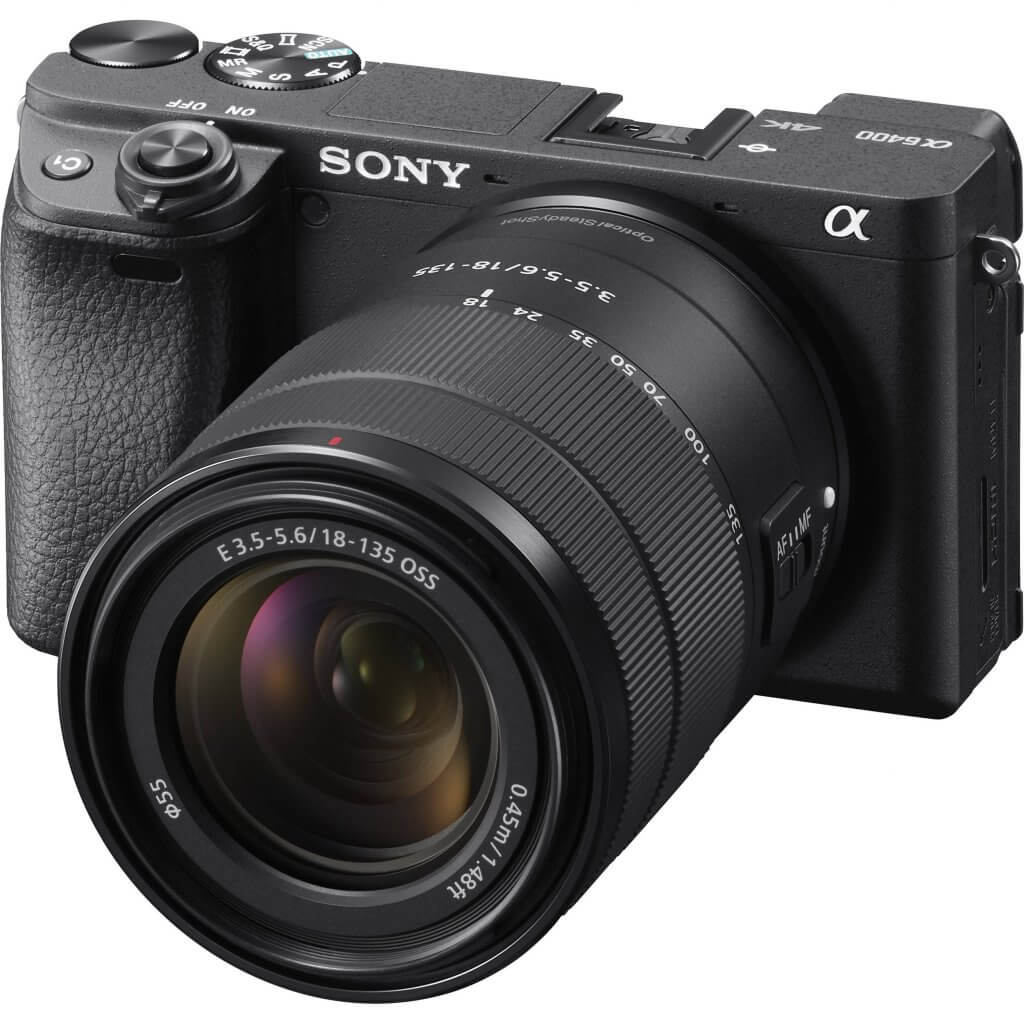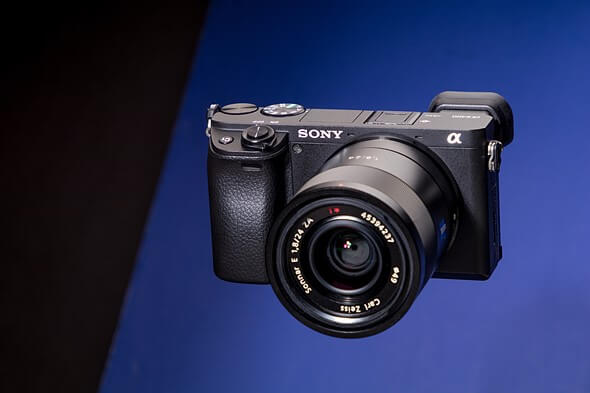Table of Contents

VS

What is a kit lens for a camera?
A typical kit lens is one that comes with a camera package. If you buy your own package, it may not come with the included kit lens stock. This article sets out to compare the features of sony a6400 kit lens vs sony 50mm portrait lens. As well as to find out which one is better for you based on their features.
The way a kit lens is set up, one size can cover a wide range of focal lengths and a few different sensor sizes.
There are typically four types of kit lens
– fixed focal length, wide-angle fixed focal length, standard fixed focal length and telephoto fixed focal length. With each being made available in dozens of different models. Each type has its strengths and weaknesses, so it is important to understand the differences between them. So as not to waste your money on a product that doesn’t suit you.
The Sony A6400 is a completely new, advanced, and highly advanced camera from Sony. It uses a translucent mirror technology called Translucent Mirror Technology. To give a high-speed continuous shooting of up 999 frames per second at full resolution. What this means this camera is very suitable for action sports and motion picture photography. Because it gives you the flexibility to capture exactly what happens in front of the camera without having to worry; about blur or missed moments.
The Sony A6400 has a 24.3MP sensor and the ability to shoot amazing photos and record beautiful movies. It has a high-speed continuous shooting of up to 999 frames/second (at full resolution) with low noise and good detail representation. Because of the translucent mirror technology, the camera can capture 100% accurate colors. Thanks to Sony’s BIONZ X processor for better color, contrast, and saturation. The new translucent mirror technology also gives perfectly consistent exposure from an optimized lens design. That helps reduce crosstalk and false color. Still on Sony a6400 kit lens vs Sony 50mm portrait lens
Are you looking for a new lens? If so, check out the article about sony 50mm portrait lens .
READ ALSO: BEST SSD FOR LIGHTROOM AND PHOTOSHOP
HOW TO COLOR GRADE USING COLOR RANGE TOOL IN PHOTOSHOP
What is the difference between kit lens and prime lens?
A kit lens is one that comes with a camera package. If you buy your own package, it may not come with the included kit lens stock.
The difference between prime lens and zoom lens is based on how they are made. A prime lens is one that has no additional lenses within its design; some cameras even have some prime lenses built-in (e.g., Apple iPhone). A zoom lens on the other hand, contains more than one optical element (i.e. lens) within its design. These lens elements move within the internal chamber as the focal length changes.
The two types of lenses differ as such:
The prime lens has a single optical glass element. And as such can be made to have a relatively large diameter. Making it possible for it to cover the wide angle of the spectrum. The zoom lens consists of several optical glass elements, and as such has a small diameter. Making it possible for it to cover only a small range of focal lengths. A prime lens does not have a moving system that is used for changing focal lengths.
In terms of quality. Prime lenses are generally considered higher-quality because there is no moving lens that can create image distortions. They are also lighter than zoom lenses and cheaper to manufacture. It is usually used by pro photographers who need a fast lens that can fit into a camera bag or purse. The prime lens is perfect for those who like to take their time and want to make sure they get the shot right and in focus.
How good is the Sony 50 mm f/1.8?

The Sony 50 mm f / 1.8 includes a powerful optical design using aspherical lens elements to control chromatic aberrations and provide high image sharpness and clarity. The lens delivers stunning sharpness and sharply detailed images. It also includes a UD (Ultra-low Dispersion) glass element to control chromatic aberrations to give you high-quality photos even in difficult lighting conditions. It also uses extra-low dispersion glass elements to provide an image free of ghosting and flare when using high-speed lenses.
The lens comes with improved Optical SteadyShot Image Stabilization system that helps reduce the effects of camera shake; in low light situations. This allows the photographer to take handholdable low light shots without having to use a tripod or use slow shutter speeds in order to stabilize the shot.
The Sony 50mm f/1.8 features a Silent AF Motor and internal focus mechanism that delivers an autofocus speed of 0.15 seconds, a continuous shooting speed of 2.5 fps and a minimum focus distance of just a few inches from the sensor plane, ensuring that you capture images sharper and more accurately than with other lenses in the market. The lens also uses an electronic contact for quick response times when focusing, making it easier to capture fast-moving subjects such as children, pets and sports movements.
If you are wondering which one is better, kit lens or prime lens, don’t worry. We have written an article on sony 50mm portrait lens . It will answer all your questions about these subjects.
How to choose the right kit lens?
If you are looking for a kit lens that is designed for your Sony Alpha A6400 camera, then read on to find out more about what you need to know when buying a kit lens for your new Sony A6400 camera . Before we get started with our comparison, it may be useful to understand what each of these types of lenses bring to the table.
As aforementioned above, a kit lens is a lens that is sold with the camera. A kit lens is usually fairly cheap and of fairly low quality. It is better than no lens, but its image quality cannot compare to that of a dedicated prime or zoom lenses. That being said, nearly all professional photographers started with a kit lens and learned their craft before moving on to more advanced lenses.
In addition, these lenses are usually designed to accommodate a wide range of focal lengths, and as such feature a relatively slow maximum aperture. A kit lens with a focal length of 18-55mm will cover a wide variety of uses.
A standard prime lens is one that has a fixed focal range – this means that it has no zoom capability or limited zoom capability. A prime lens has fewer elements than a zoom lens as well as fewer moving parts. This allows for less vignetting and reduced chromatic aberration as well as reduced cost and weight. On the other hand, prime lenses do not give you the same flexibility as zoom lenses because they cannot be adjusted to different focal lengths without changing the camera itself or switching lenses.
DIFFERENCE BETWEEN SONY A6400 KIT LENS AND SONY 50MM PORTRAIT LENS
MODEL: A6400 KIT LENS

DESIGN: N/A
FOCAL LENGTH: N/A
ZOOMING: N/A MULTI-COATED ELEMENTS: Aspherical (low dispersion) lens elements FLARE REDUCTION: Control circuit to suppress flare and ghosting when using high speed lenses
PICTURE STABLIZATION SYSTEMS: Electronic vibration compensation for both horizontal and vertical adjustments electronic contact; Image stabilization also indicates models that contain the feature. Does not apply to all models.
MODEL: Sony 50mm f1.8

DESIGN: Prime lens (fixed focal length)
FOCAL LENGTH: 50 mm (35mm equivalent) ZOOMING: No MULTI-COATED ELEMENTS: N/A FLARE REDUCTION: N/A
PICTURE STABLIZATION SYSTEMS: Optical SteadyShot Image Stabilization Also * indicates models that contain the feature. Does not apply to all models.
A telephoto lens is one that has a large focal length. These are used to capture images of objects that are further away from the photographer. They are useful for capturing images of wildlife, sports or even portraits.
Telephoto lenses have a narrow opening, which allows more light to enter the camera body, allowing for faster shutter speeds. This type of lens is usually heavier than other types of lenses because it needs to be able to accommodate the large amount of glass used in its construction. Telephoto lenses also cause more chromatic aberration and vignetting than shorter focal length lenses.
Telephoto lenses come in a variety of focal lengths, but there are a couple of main categories. A short telephoto lens is typically between 85mm and 135mm, while a long telephoto lens is between 150mm and 200mm. In addition, a super telephoto lens is anything that has a focal length over 200mm.
A prime lens is one that has a fixed focal range – this means that it has no zoom capability or limited zoom capability. A prime lens has fewer elements than a zoom lens as well as fewer moving parts. This allows for less vignetting and reduced chromatic aberration as well as reduced cost and weight.
Hope you literally learnt all about Sony a6400 kit lens vs Sony 50mm portrait lens.


This is wonderful.